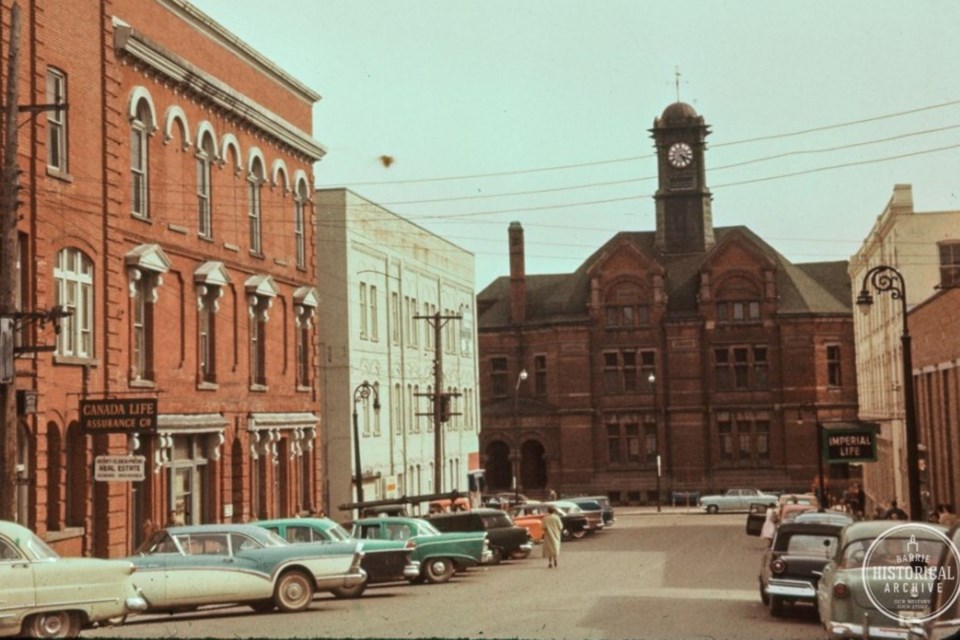Who shot J.R.? In 1980, the uber-popular television series Dallas created a frenzy around what may have been the most talked about cliffhanger in the history of the medium. Betting houses got in on the action and the stars of the show demanded a large increase in pay.
In the unlikely event that you don’t know who shot fictional character J.R. Ewing, I won’t spoil it. Instead, I will offer you this much older mystery, one involving a real-life local character.
Who shot Fred Parr?
At the time of his death, Fred Parr was a 28-year-old plumber. Married just two years, this up-and-coming businessman had many influential friends.
Fred was born in 1891 in Flos Township, the only son of farmer, Henry Parr, and his wife, Mary Jane. Fred Parr had four sisters.
When Fred was 13 years old, his father died unexpectedly. Very likely, young Fred had to step up to support his mother and sisters after that.
By the time he was 20 years old, Fred was living in the hamlet of Cundles, just north of Barrie. He had a great friend, Albert Moffatt, who was also a teammate on the local hockey team, the Crusaders of the South Simcoe Hockey League.
In 1915, the Crusaders won the South Simcoe championship.
Albert Moffat was a plumber and the two men went into business together as Moffatt & Parr and ran a shop on Owen Street in downtown Barrie.
In March 1919, Fred married Pearl Armitage. She was the only child of carpenter, William Armitage, and his wife Selena. Eighteen months after her wedding, Pearl’s father went hunting with some friends in the woods near Whitney, Ont., now part of Algonquin Park. William Armitage suffered a heart attack during the trip and died there.
In January 1921, Fred left the business partnership he had with Albert Moffatt and relocated to 35 Dunlop St. E. He soon hired a manager, James Richards, also a plumber, to assist him in the shop.
Perhaps the addition of an equally qualified employee allowed Fred more leisure and enabled him to go out and pursue some of his personal hobbies.
I can only imagine the thoughts that went through Pearl’s head on Aug. 31, 1921, as Fred gathered supplies for a hunting trip planned with some friends. Less than a year had passed since the death of Pearl’s father.
Fred’s three companions that day were George Vickers, Fred Loth and Harold McNabb. They all headed to Essa Township to hunt in the Baxter swamp.
George Vickers was a very well-known businessman in town. Born in England, he came to Canada as a small child in 1874. From his early teens, George worked for various dry goods merchants in Barrie.
Vickers eventually partnered with James Vair and together they operated Vicker & Vair dry goods at the corner of Owen and Dunlop streets. By 1921, he was running his own store, simply called Vickers’.
Fred Loth was a harness-maker. He was 50 years old and had been running his business at 129 Dunlop St. since coming to Barrie in 1908.
Harold McNabb was the same age as Fred Parr, and he too was a plumber.
In the late afternoon, on the last day of August, the foursome set off for their hunt. After arriving at their destination, the four men separated and went off in different directions in search of game.
George Vickers situated himself at the edge of the swamp, near the base of a steep ridge. About 45 minutes into the expedition, Vickers heard a gunshot and began walking toward to the source of the sound.
Assuming one of his friends had shot something, Vickers called out, “What did you get?!” He only received a slight groan in reply. It was then that he discovered Fred Parr, lying face down in a pool of blood, bleeding heavily from the chest. Shocked at the sight, Vickers shouted for the others to come.
In the fading light, George Vickers, Fred Loth and Harold McNabb picked up gravely injured Fred Parr and started to carry him out of the swamp. Their companion passed away as they were crossing the ridge.
Each week, the Barrie Historical Archive provides BarrieToday








